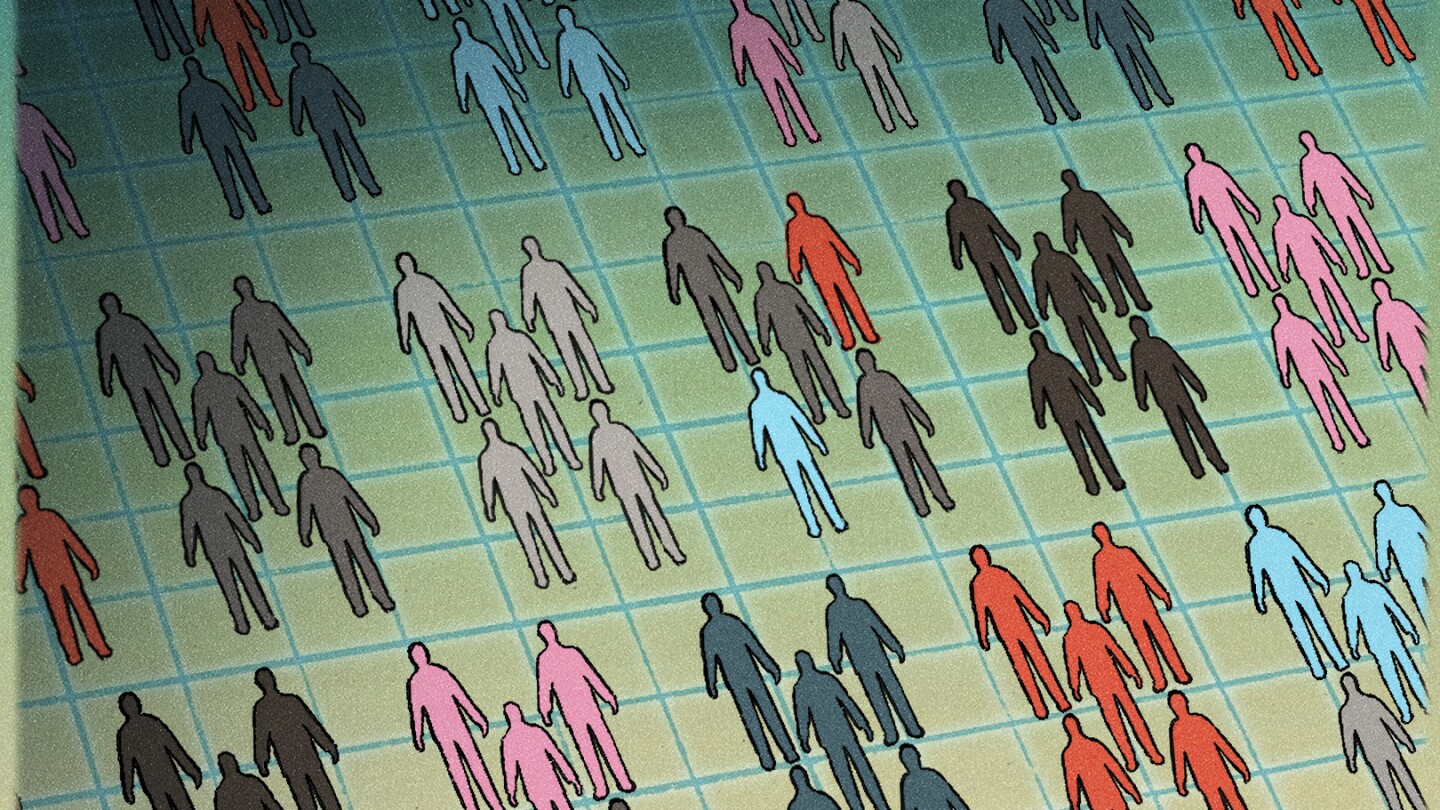Lifestyle
Edmunds small sedan test: 2025 Honda Civic vs. Kia K4

When budgets are tight, it’s hard to beat a small sedan for value. Better yet, the modern models in the class are stylish, roomy and technologically advanced. The Honda Civic is one of the most popular models on sale, and it faces new competition from the Kia K4, which replaces the previous Forte in that automaker’s lineup. How well does the K4 stack up? Edmunds compared the new K4 with the benchmark Civic to find out.
Price and value
Compared with the Kia K4, Honda charges a substantial premium for the Civic. For example, you can get a nicely equipped K4 EX for less than a base Civic LX. While it’s true the Civic is available with a hybrid powertrain with an EPA-rated combined fuel economy of up to 49 mpg, those hybrid Civics are more expensive to initially purchase. Otherwise, fuel economy is pretty similar for the two sedans.
Kia further boosts the K4’s value with superior warranty coverage and a generous roadside assistance plan. Also, the compact Kia should lose less of its original value after five years than the more expensive Honda.
Winner: Kia K4
Comfort and convenience
Comfort and convenience are critical to your long-term satisfaction in owning a vehicle. You need supportive seats, room for your passengers and things, and thoughtful details that make life easier and you happier.
The new Kia K4 is roomy inside, and the interior is high-tech and stylish. Ambient lighting, heated and ventilated front seats, and rear air-conditioning vents and USB charging ports are available in the Kia. Also, the K4 provides plenty of small-item storage, and the front cupholders accommodate oversized water bottles.
Honda provides a slightly snugger fit in the Civic, but the seats boast superior comfort and support for effortless long-distance driving. However, front seat ventilation is unavailable, and rear seat passengers go without air vents and charging ports. In-cabin storage is competitive with the Kia’s, if not quite as configurable.
The sedans offer similarly sized trunks, but only the Civic offers a hatchback body style, dramatically increasing utility. That helps to keep the Honda in the hunt in this category.
Winner: Tie
Technology
The Kia K4 wows you with technology. The highlights include digital key capability, a panoramic display with dual 12.3-inch screens, blind-spot cameras and blind-spot monitoring, and an intersection collision avoidance system. The interior looks the part, too, as sophisticated as some entry-level luxury cars in appearance if not quality.
The Civic doesn’t impart as high-tech an impression, and if screen size is important to you, it falls short. Base Civics have a smallish 7-inch screen and even the available 9-inch screen is smaller than the standard one in the K4. Both cars offer a wealth of standard advanced driver aids that include adaptive cruise control, lane centering assistance, and forward collision with automatic emergency braking.
Winner: Kia K4
Engine and fuel economy
Honda might charge a premium for the Civic, but the Civic boasts more efficient and satisfying powertrains offering up to 49 mpg. The company caters to driving enthusiasts, too, with the sport-tuned Civic Si and high-performance Civic Type R, each equipped with a manual gearbox.
Most Kia K4 models have an underwhelming four-cylinder engine that doesn’t feel as powerful and isn’t as efficient as what you’ll find in the most affordable Civics. You can upgrade to a more powerful turbocharged engine in the K4, but Edmunds hasn’t found it to be better than the engine in the Civic Si or Type R.
Winner: Honda Civic
Driving enjoyment
Get behind the wheel of a Honda Civic, sink into the comfortable and supportive driver’s seat, push the engine start button, and you’re in for a treat. The Civic is smooth and refined, taut without sacrificing ride quality, and responsive to steering, accelerator and brake inputs. In short, it is effortless and rewarding to drive, and that’s something anyone can appreciate.
Comparatively, the Kia K4 is not those things. It can feel slow with the standard engine, with uneven and unpredictable power from the turbo upgrade. The ride can feel choppy, and road noise is more of an issue in the Kia. If we had to sum up the K4’s driving experience in one word, it would be “inoffensive.”
Winner: Honda Civic
Edmunds Says
It’s no secret that Edmunds thinks highly of the Honda Civic. The new hybrid model earned our praise as the Edmunds Top Rated Best of the Best vehicle for 2025. However, the new Kia K4 is an impressive new compact car in its own right, particularly regarding overall value and its available technology. The Kia saves you money in style, while the Civic satisfies you with every drive.
____________
This story was provided to The Associated Press by the automotive website Edmunds.
Christian Wardlaw is a contributor at Edmunds.
Lifestyle
Transgender student’s arrest for violating bathroom law is thought to be a first

A transgender college student declared “I am here to break the law” before entering a women’s restroom at the Florida State Capitol and being led out in handcuffs by police. Civil rights attorneys say the arrest of Marcy Rheintgen last month is the first they know of for violating transgender bathroom restrictions passed by numerous state legislatures across the country.
Capitol police had been alerted and were waiting for Rheintgen, 20, when she entered the building in Tallahassee March 19. They told her she would receive a trespass warning once she entered the women’s restroom to wash her hands and pray the rosary, but she was later placed under arrest when she refused to leave, according to an arrest affidavit.
Rheintgen faces a misdemeanor trespassing charge punishable by up to 60 days in jail and is due to appear in court in May.
“I wanted people to see the absurdity of this law in practice,” Rheintgen told The Associated Press. “If I’m a criminal, it’s going to be so hard for me to live a normal life, all because I washed my hands. Like, that’s so insane.”
At least 14 states have adopted laws barring transgender women from entering women’s bathrooms at public schools and, in some cases, other government buildings. Only two — Florida and Utah — criminalize the act.
Rheintgen’s arrest in Florida is the first that American Civil Liberties Union attorneys are aware of in any state with a criminal ban, senior staff attorney Jon Davidson said.
Rheintgen was in town visiting her grandparents when she decided to pen a letter to each of Florida’s 160 state lawmakers informing them of her plan to enter a public restroom inconsistent with her sex assigned at birth. The Illinois resident said her act of civil disobedience was fueled by anger at seeing a place she loves and visits regularly grow hostile toward trans people.
“I know that you know in your heart that this law is wrong and unjust,” she wrote in her letter to lawmakers. “I know that you know in your heart that transgender people are human too, and that you can’t arrest us away. I know that you know that I have dignity. That’s why I know that you won’t arrest me.”
Her arrest comes as many Republican-led states that have enacted restroom restrictions grapple with how to enforce them. Laws in Alabama, Kansas, Kentucky and North Dakota do not spell out any enforcement mechanism, and even the state laws that do largely rely on private individuals to report violations.
In Utah, activists flooded a tip line created to alert state officials to possible violations of its bathroom law with thousands of hoax reports in an effort to shield transgender residents and their allies from any legitimate complaints that could lead to an investigation.
Supporters of the laws say they are needed to protect women and girls in private single-sex spaces.
Opponents such as Nadine Smith, executive director of the LGBTQ+ advocacy group Equality Florida, say they create dangerous situations for all by giving people license to police others’ bodies in bathrooms.
“The arrest of Marcy Rheintgen is not about safety,” Smith said. “It’s about cruelty, humiliation and the deliberate erosion of human dignity. Transgender people have been using restrooms aligned with their gender for generations without incident. What’s changed is not their presence — it’s a wave of laws designed to intimidate them out of public life.”
If Rheintgen is convicted, she worries she could be jailed with men, forced to cut her long hair and prevented temporarily from taking gender-affirming hormones.
“People are telling me it’s a legal test, like this is the first case that’s being brought,” she said. “It’s how they test the law. But I didn’t do this to test the law. I did it because I was upset. I can’t have any expectations for what’s going to happen because this has never been prosecuted before. I’m horrified and scared.”
___
Associated Press writer Kate Payne contributed reporting from Tallahassee.
Lifestyle
Unique Chicago museum showcases the history of public housing through its residents

CHICAGO (AP) — Set inside a once-dilapidated 1938 building on Chicago’s near West Side, a one-of-a-kind museum hopes to change the perception of public housing in America.
A former federal housing project that underwent a $17.5 million transformation, the National Public Housing Museum opens Friday and showcases recreated apartments from three different eras. It’s the brainchild of public housing residents who wanted to tell a more complete story about their lives, from the joys of living in tight-knit communities to the effects of racist housing policies.
“The biggest artifact in our collection is the building itself,” said Lisa Yun Lee, the museum’s executive director.
Remnants of a paint-chipped wall, with cracks and graffiti, greets visitors at the entrance. Original mailboxes with apartment numbers scrawled in marker are displayed near items belonging to Supreme Court Justice Sonia Sotomayor, who grew up in New York public housing. An outdoor garden is lined with decades-old animal statues, once the centerpiece of a Chicago public housing courtyard.
Museum organizers hope to revive such a gathering place and say the location in Chicago’s Little Italy neighborhood is important. The museum complex includes 15 new public housing apartments where residents will live. Next door is a city library branch that also has affordable housing units. A mixed-income development is under construction nearby.
“It’s a museum that says, ‘There are things that everybody deserves,’” said Sunny Fischer, a consultant for foundations, who grew up in public housing and is the museum board’s chair.
Museum admission is free though guided tours cost money.
The museum’s opening faced delays, due to fundraising challenges and different mayoral administrations with changing agendas. The building was given to the museum by the federal Department of Housing and Urban Development. The $17.5 million price tag is a mix of private donations, including from foundations, and state and federal money.
Residents started planning the museum about 18 years ago as the nation’s third-largest city was in the midst of demolishing public housing high-rises. The ambitious and controversial improvement plan, which displaced thousands of families, included tearing down Cabrini-Green, an infamous housing project portrayed in the “Candyman” horror movies.
Residents didn’t want their stories to be wiped out with the towers. Among the original planners was activist Francine Washington.
The 69-year-old has lived in Chicago public housing almost her entire life. It’s where she raised a family and worked as a property manager and in food service. She serves on the museum’s board and hopes to help counteract stereotypes about public housing residents.
“Show them what we have accomplished, what we have done, what we have been through,” she said. “Even though we’re in public housing, we’re human beings. We want the same things in life that they want.”
One of the museum’s goals is to show how the racial makeup of public housing in Chicago and other places changed, largely due to racist housing authority practices. For instance, Black residents were concentrated in high-rises in segregated communities with few opportunities to move.
The restored apartments inside the former Jane Addams Homes building feature original artifacts donated by the families of former residents, including clothing and dishes. The 1930s apartment belonged to a Jewish family while one from the 1950s was an Italian family’s home. The third, from the 1970s, was the childhood home of the Rev. Marshall Hatch, a well-known Black pastor and Chicago activist.
Museum organizers say they also were inspired by New York City’s Tenement Museum, which highlights preserved tenement apartments on the Lower East Side. But Chicago organizers say they took it a step further with a high-tech spin, including recorded oral histories that play as visitors walk by, handheld screens and a video by a shadow-puppet theater company that illustrates barriers Black families faced in finding housing, like redlining.
At the same time, the museum showcases lesser-known bright spots in public housing history, like resident-organized safety patrols and cooperatives to sell groceries. Public housing residents called “ambassadors” also work on museum staff.
“We had to change the narrative about public housing,” said Lee. “When you said the words ‘Cabrini-Green’ that brought up a visceral feeling in people. And usually that was one that was a stereotype of what it means to be poor and Black in America. Creating exhibits that challenge that narrative was a really important part of our work.”
Perhaps the best example is the “REC Room,” a music studio where visitors can scan albums from numerous genres to learn about musicians who lived in public housing. That includes Elvis and Salt-N-Pepa, whose group member DJ Spinderella lived in public housing and is a museum curator.
A large black and white photo on the wall shows beaming residents dancing at a Cabrini-Green house party.
It’s one of the favorite parts of the museum for Gentry Quinones, a museum staff member who lives in Chicago public housing.
“There was also joy and community,” she said.
Lifestyle
Community, mentors and skill-building: Experts weigh the role of employee resource groups

NEW YORK (AP) — After moving to the United States from South Korea at age 6, Jenny Jang found it challenging to navigate through school and her first jobs.
“In all of the environments I was in, I was always a minority,” Jang said. “Coming to the States, I didn’t have a road map for me. And I couldn’t ask these questions to my parents, so I had to seek mentorship from elsewhere.”
Now based in Atlanta and working at an international elevator company, Jang launched the organization’s business resource groups in North America. The gatherings offered ways for employees to find support and connect around an identity or theme.
The first group, for women employees, drew 500 members in three years. Jang brought in a facilitator to lead conversations on topics such as balancing family responsibilities and a career in a male-dominated industry. A group for veterans and supporting military families came next.
The gatherings “became a safe space where employees could share their experiences,” she said.
Employee resource groups, which are voluntary, employer-sanctioned groups designed to enhance diversity and inclusion, began in corporate America in the 1970s to help address tensions around race, gender and sexual orientation. Over the years, the focus has expanded to recognize other affiliations and experiences, such as caring for a family member, mental health challenges, neurodiversity and generational divides.
Critics of ERGs have become more outspoken in arguing that such groups give participants unfair advantages and damage staff morale by splintering colleagues based on personal characteristics or beliefs. In some cases, companies have responded to complaints by revising the purpose and scope of their employee groups.
This article is part of AP’s Be Well coverage, focusing on wellness, fitness, diet and mental health. Read more Be Well.
An executive order President Donald Trump signed with the goal of ending diversity, equity and inclusion programs in the federal government and beyond has created additional uncertainty around the future of ERGs. Here is some information about starting, participating in or evaluating the groups at your company:
Can you legally participate in an employee resource group?
The Equal Employment Opportunities Commission released guidance in March which said that limiting membership in ERGs to workers covered by anti-discrimination laws, such as only women or people of a particular race, can be considered unlawful segregation.
To comply with the EEOC’s interpretation, employers should ensure workplace groups are open to all employees.
“They want to make sure these programs are not offering some tangible benefit to one group of employees at the expense of another,” said Infinito Associates CEO Kevin England, whose consulting group helps organizations start ERGs.
If an ERG offers mentorship or opportunities only to people who identify as a member of a legally protected class, “you absolutely do need to open that up,” said David Glasgow, executive director of the Meltzer Center for Diversity, Inclusion and Belonging at NYU School of Law.
Some employee resource groups organized around an identity create separate email lists for members who share the identity and members who describe themselves as allies. Glasgow advises against doing that. “It raises the question of what you’re excluding people from,” he said.
The Wisconsin Institute for Law & Liberty, a conservative public interest law firm and policy organization, has received dozens of complaints from employees who felt excluded from their workplace ERGs, according to Deputy Counsel Dan Lennington. Opening employee groups to everyone will not necessarily satisfy those concerns, he said.
“The question is, are you treating employees differently based on race?” Lennington said. “Are you making employees feel uncomfortable about their race or gender or sexual identity?”
What benefits do employee resource groups provide?
Proponents of ERGs list numerous benefits for employees and management. For participants, the groups are places to find community, develop leadership skills and create a channel for sharing their views with higher-ups. Companies often sponsor affinity groups as a tool for recruiting and retaining diverse employees.
“Employee engagement is great because it creates, typically, higher effort and retention,” said Helena Pagano, chief people and culture officer at insurance and financial services firm Sun Life. “One way that you drive engagement is making people feel like they had a voice. They had a place to express opinions and drive policies and outcomes that matter in the company.”
England, the consultant, was working at a bank call center when he joined and then took on a leadership role in an ERG for people who identify as LGBTQIA+.
“I was terrified to speak publicly, and because of that role, I had to do a lot of that,” England said. “I was able to develop skills that were completely unrelated to my day job.”
Anna Ettin co-founded Bank of America’s intergenerational employee network about a decade ago, and worked on bridging gaps between millennials and baby boomers. Now, as co-founder of Tapestry Partner Solutions, a consulting group that specializes in intergenerational dynamics and skills development, she’s doing the same work with Generation Z.
“There are some real differences in the way they’re coming into the workplace and what their needs are, their expectations,” Ettin said. “We’re really helping companies think through, how do you retain the incredibly talented staff you have and also be appetizing to Gen Z?”
If your workplace permits ERGs, how do you start one?
When Ettin worked in a call center about 20 years ago, she noticed few women in management roles. “There was a clear gap in the leadership pipeline for women,” she said. She gathered 20 highly engaged women and they started by planning events on interviewing skills, resume writing and talks with senior female leaders about their career paths and obstacles they’d overcome.
Experts recommend finding a senior leader to act as a sponsor. In Ettin’s case, that meant convincing the call center manager to approve and participate in the group.
Groups typically begin when 10 or 20 people find each other organically and get together for happy hours or lunches, England said. “You get some momentum going, and sometimes that group of 20 people becomes 50 or 100 people,” he added.
Then you can tell leaders, “we already have an informal collection of employees with this shared experience, and we would love to do something more with this,” England said. “We think that this group of friends and colleagues could help the organization.”
Some ERGs are given company funds for meals, events or travel to conferences. A new group should be prepared to make a business case for a budget request. Experts also advise collecting data to show the group’s impact in areas such as employee retention.
It’s easier to start a new ERG when an organization already has one in place because there’s a road map of what worked and who supported the initial group. But if none exist at your workplace, you can start with one and build from there, Jang said. “There is no perfect recipe,” she said. “Start small.”
As organizations absorb various federal directives, they’re deciding which direction to take. Some have adjusted to make it clear that all are welcome. Others have shuttered their ERGs altogether, wiping out years of work, Ettin said.
“The underrepresented, underserved communities still need the programs, support, connectivity and advocacy that they’ve needed for the last decades,” Ettin added. “That hasn’t changed.”
___
Have you overcome an obstacle or made a profound change in your work? Send your questions and story ideas to [email protected]. Follow AP’s Be Well coverage, focusing on wellness, fitness, diet and mental health at https://apnews.com/hub/be-well.
-

 Conflict Zones2 days ago
Conflict Zones2 days agoUS attacks kill 4 in Yemen as second aircraft carrier sent to Middle East | Military News
-

 Lifestyle2 days ago
Lifestyle2 days agoCooking with kids teaches healthy eating and more
-

 Asia1 day ago
Asia1 day agoMyanmar’s military government announces temporary ceasefire to aid quake efforts
-

 Middle East2 days ago
Middle East2 days agoIsrael’s Netanyahu heads to Hungary in defiance of ICC arrest warrant | Gaza News
-

 Sports2 days ago
Sports2 days agoFreddie Freeman misses Los Angeles Dodgers game after injuring ankle in shower ‘mishap’
-

 Europe2 days ago
Europe2 days agoAlex Ovechkin: A leap year ploy could have altered hockey history as Capitals captain closes in on Wayne Gretzky’s ‘unreachable’ goal record
-

 Middle East2 days ago
Middle East2 days agoIsrael’s war on Gaza deadliest conflict ever for journalists, says report | Gaza News
-

 Sports2 days ago
Sports2 days agoCarlo Ancelotti: Real Madrid coach goes on trial in Spain for tax evasion




